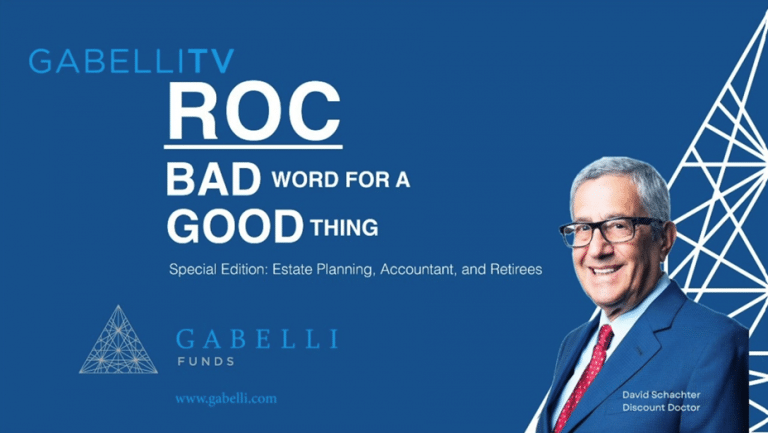1Q24 Commentary
The 2023 year-end rally in stocks continued into the first quarter, as encouraging economic data on both the growth (resilient) and inflation (normalizing) fronts emboldened soft landing hopes in the US, while enthusiasm around the potential of artificial intelligence permeated more broadly into technology stock valuations. US Federal Reserve leadership seems increasingly comfortable in the Goldilocks-like path the economy is heading (“not too hot, not too cold”), setting the stage for less restrictive monetary policy later this year. In the real economy, the world is settling into a new normal after years of COVID-driven distortions and disruptions. However, despite these broadly encouraging underpinnings there is no shortage of risks looking ahead – economic, geopolitical, financial – and we are mindful that over the last eight monetary policy tightening cycles it has taken ten quarters on average for the economy to tip into recession (economic activity always lags monetary policy changes). While the outlook for stocks is therefore mixed over the near-term, longer-term returns will, as always, be driven by earnings growth. And despite a complex set of crosscurrents in today’s capital markets we continue to feel confident in the earnings growth outlooks across the companies in our portfolio.
THE ECONOMY
Economic data released during the first quarter illustrates a US economy which remains on strong footing, and importantly suggests that price levels are continuing on a disinflationary, albeit bumpy, path. GDP has been tracking ahead of expectations, most recently evidenced by the Federal Reserve’s March Summary of Economic Projections (SEP) which showed an increase in the outlook for 2024 US GDP growth to 2.1%, up from 1.4% in the December projection. Inflation readings have been mixed to start the year, with CPI printing hotter than anticipated to start 2024. Though when viewed on longer-term averages the path of disinflation is clearer and encouraging (for example, the Fed’s preferred 6-month average PCE deflator is closing in on the 2% target, sitting at 2.5% through February). Just as Taylor Swift could not have envisioned a Super Bowl celebration when she began dating Travis Kelce last fall, Fed officials could not have drawn up such an optimal view of the economy as we see today when the policy rate was first increased two years ago. Indeed, whereas discussion throughout 2023 focused on whether the Fed could navigate a soft landing, during 1Q some well-respected economists began to posit that the Fed has already achieved this objective.
However, while headline trends look encouraging there are reasons to keep enthusiasm measured. Strong growth in nonfarm payrolls to begin the year has been driven primarily by less cyclical Government and Healthcare sectors; and the Household Employment Survey, which often leads the Establishment Survey of payrolls, has turned negative over the last three months. Relatedly, the Unemployment Rate has started ticking higher, and the widely referenced Sahm Rule (which has had high empirical success forecasting recessions following a 50bps increase in 3-month average Unemployment Rate) has now been triggered in 21 states which collectively account for ~45% of US GDP. Elsewhere, Global Manufacturing PMIs have bounced off recent lows though generally remain in contraction (the March US reading, which printed > 50 for the first time in 18 months, being a notable recent exception). Further, US retail sales have slowed sharply to begin 2024 (to < 1% y/y) following a stronger end to 2023 (from +3.6% in 4Q). Finally, record debt levels in the government, consumer, and business sectors also bear monitoring. Government debt has been increasing at a torrid pace of ~$1tn every 100 days and sits near the highest level since WWII as a % of GDP; household debt has eclipsed $17tn and excess savings accumulated during the pandemic have largely been spent; and a wave of commercial real estate loan and corporate debt maturities ($4.4tn over the next four years according to Moody’s) will need to be refinanced at higher rates in the coming months.
FINANCIAL MARKETS
Against the backdrop of resilient headline economic data and in anticipation of rate cuts in the US and most major international economies, risk assets have had an extraordinarily strong start to the year. The S&P 500 posted 22 all-time closing highs in 1Q; US high yield corporate credit spreads have narrowed to 17-year lows; and certain speculative markets (Bitcoin +60% YTD as a poster child) have fared similarly. These milestones have come despite higher yields (10Y US Treasury yield up more than 35bps YTD), rising consumer credit delinquency rates (now above pre-COVID levels for both credit card and auto loans) and continued signs of stress in the US regional banking ecosystem (evidenced by a ~70% YTD share price decline in New York Community Bank, which surprised the market with a dividend cut, negative earnings restatement, 10-k filing delay and CEO resignation). This peculiar bifurcation between strong asset prices and mixed fundamentals is not unique to the US – UK, Germany and Japan for example are economies which are each in technical recession with stock markets at or near all-time highs.
Regarding the stock market specifically, we began to observe an encouraging broadening out of strong performance beyond the well-chronicled top-heavy attribution of the last few quarters which has been led by the “Magnificent 7”, and indeed at quarter-end the S&P 500 closed with the highest mix of stocks trading above 200-day moving averages in three years. As for the “Mag-7”, there was interestingly wide performance dispersion in 1Q, as AAPL and TSLA returned -9% and -29% respectively, vs. NVDA and META +92% and +42%. This dispersion is a helpful reminder that stock prices are ultimately driven by earnings expectations: using the same four companies as an example, AAPL and TSLA EPS estimates were revised notably lower during the quarter (AAPL by ~2% and TSLA by ~27%) vs. NVDA and META meaningfully higher (NVDA by 26% and META by 17%).
The S&P 500 now trades at 21x forward earnings, a level which screens on the rich side vs. history (10% below the 10-year high) and similarly screens as full in the context of prevailing yields (for example, the S&P 500 earnings yield at 4.8% is below an investment grade credit index at 5.5%). Importantly, as mentioned the Federal Reserve has recently signaled an easier path for monetary policy moving forward with rate cuts anticipated to commence around mid-year and with the pace of quantitative tightening expected to slow beginning in 2Q. However, given a relatively full stock market valuation strong earnings growth will be required to support stock prices even as the central bank transitions to easier monetary policy. On this front consensus is currently pricing in ~10% EPS growth for the S&P 500 this year, which represents a healthy acceleration vs. the sluggish result last year (when S&P 500 earnings were roughly flat y/y).
ARTIFICIAL INTELLIGENCE
Enthusiasm around the potential of artificial intelligence was a positive theme for equities in 1Q, as financial contributions from the technology started to become more of a reality (and less of a hope) over the last earnings cycle.
There are several examples of AI’s financial contributions in 1Q. Most clearly, Nvidia reported a 5x y/y increase in datacenter revenues in the latest quarter, and Wall St. consensus expects consolidated EBITDA to exceed 2022 (pre-AI) levels by 800%. Separately, Microsoft disclosed that AI services contributed 6ppts of growth to its Azure cloud business in the latest quarter, implying the business is already annualizing at a several-billion-dollar run-rate mere quarters after launching. Finally, ASML reported bookings nearly 3x greater than Wall St. consensus in the latest quarter, due primarily to orders for extreme ultraviolet lithography equipment used to fabricate AI chips.
Beyond the AI infrastructure supply chain, we also began to hear about some exciting generative AI applications already demonstrating real world utility. As one example, OpenAI’s Sora model, which creates video content when prompted with text, was introduced. Elsewhere, fintech giant Klarna disclosed that a customer service agent is already doing the job of 700 workers.
AI will remain a dynamic theme in the stock market in the coming quarters and years and there will inevitably be bumps along the way. For now, suffice to say the latest results make clear that the size of the long-term opportunity is enormous, and in many cases recent stock price appreciation for AI winners can be explained by company fundamentals. In short, AI seems to have moved from hype to reality over the last quarter, and we remain excited by its potential.
CONCLUSION
While the stock market is different from the economy the two are inevitably related. In thinking about the forward outlook, it is notable that there has never been a recession following a quarter with a 10% stock market rally (as we had in 1Q). Therefore we enter 2Q with a confident though measured approach to risk taking, balancing reasons for optimism (soft landing on track, PMIs bottoming, promise of AI, and stock-market-fueled wealth effect tailwinds) with discipline to reflect uncertainty around dynamics like monetary policy lags, rising debt burdens, last mile inflation stickiness, and geopolitical fragility.
John T. Belton, CFA
Howard F. Ward, CFA








